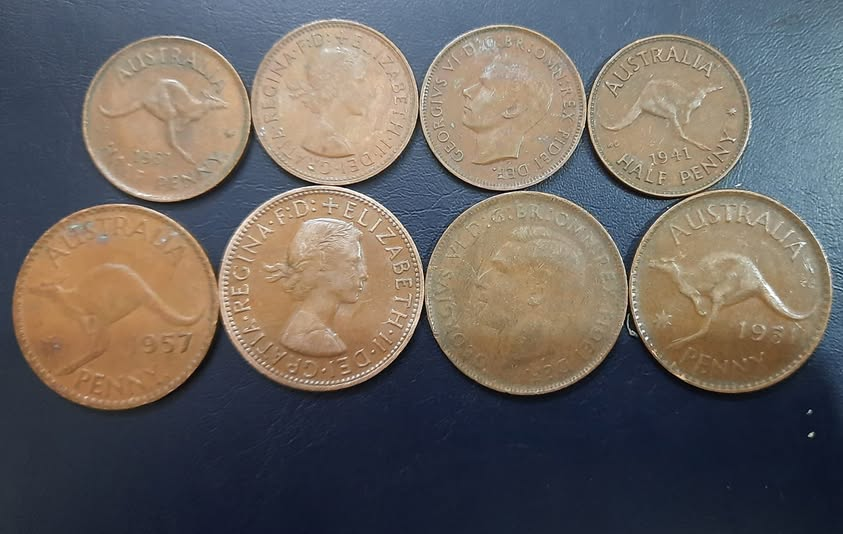Exploring Member Countries and Their Coins The Commonwealth of Nations, a voluntary association of 56 independent and equal sovereign states, boasts a rich tapestry of cultures, histories, and, of course, currencies. While the British Pound Sterling holds a special place as the currency of the UK (the historical heart of the Commonwealth), many other member nations issue their own distinctive coinage, each telling a unique story.
Today, Commonwealth countries issue a wide range of coins, each with its unique design, features, and history. Let's embark on a numismatic journey through some of the most recognizable Commonwealth coins and examine the elements that make them stand out.
The Enduring Legacy: The Monarch's Effigy One of the most instantly recognizable features linking many Commonwealth currencies is the effigy of the reigning British monarch on the obverse (heads side) of their coins. For decades, Queen Elizabeth II's portrait graced the coinage of numerous nations. Following her passing, King Charles III's likeness is now gradually appearing on new issues. This shared symbolic link reflects the historical connection to the British Crown, even for republics within the Commonwealth.
However, the specific portrayal of the monarch can vary, reflecting local artistic interpretations and stylistic preferences of the issuing country's mints.
Beyond the Crown: Diverse National Symbols and Features. While the monarch's portrait often provides a common thread, the reverse (tails side) of Commonwealth coins is where the true diversity and national identity shine through. These designs typically showcase:
National Flora and Fauna: Many countries proudly display their unique biodiversity. For example:
Australia: Australian coins are renowned for their depictions of native animals such as kangaroos, emus, and platypuses. The $1 and $2 coins feature an image of an Aboriginal elder, while the 50c coin showcases the Australian Coat of Arms.
New Zealand: The Kiwi bird, a national icon and symbol of national pride, is a prominent feature on the $1 coin, while the $2 coin has a representation of the silver fern. New Zealand coins are often known for their minimalistic designs.
Canada: Canada's coins feature images of significant Canadian symbols. The "$1 (loonie)" is known for its depiction of a common loon, a bird found in Canada, while the "$2 (toonie)" features a polar bear.
South Africa: One of the most distinctive features of South African coins is their animal motifs. The 5c, for example, has a depiction of a springbok, and the reverse side frequently showcases animals representative of South Africa's diverse wildlife.
United Kingdom: While the monarch is on the obverse, recent UK coinage under King Charles III features designs inspired by the natural world, such as a hazel dormouse, red squirrel, oak tree leaf, capercaillie, puffin, Atlantic salmon, and bees.
Historic Landmarks and Cultural Icons: Buildings, monuments, and symbols of cultural heritage are also popular choices:
India: Indian coins often feature the national emblem, the Ashoka Pillar, on the obverse. The reverse side displays symbols or images that represent Indian culture and heritage. For instance, the ₹10 coin has an image of a lion from the national emblem, while the ₹2 coin features a satellite from India’s space achievements, highlighting modern achievements alongside ancient culture.
Singapore: Singapore's coins often feature national landmarks such as the Merlion (the national symbol) or Singapore’s iconic skyline. The $1 coin is especially known for its depiction of the Singaporean flower, the Vanda Miss Joaquim.
United Kingdom: The reverse of British coins often features various designs, including images of famous landmarks and historical figures. For instance, the £2 coin sometimes depicts British innovations and cultural icons.
Coats of Arms and Emblems: The national coat of arms or other official emblems frequently appear, signifying state authority and national pride.
Commemorative Designs: Many Commonwealth nations issue special commemorative coins to mark significant historical events, anniversaries, or achievements. These limited-edition coins often feature unique designs that deviate from standard circulation coinage, making them highly sought after by collectors. For example, some Australian commemorative coins for sporting events feature Australia’s sporting culture, and the UK's £2 coin frequently has commemorative phrases or designs related to anniversaries, like the 1999 Rugby World Cup or the 2002 Commonwealth Games.
Numismatic Details and Variations: Beyond the imagery, the physical characteristics of these coins are also important:
Denominations: Each country has its own system of denominations. For example, the British Pound is divided into 100 pence (p), while the Canadian, Australian, and New Zealand Dollars are divided into 100 cents. The Indian Rupee is divided into 100 paise, and the South African Rand into 100 cents.
Materials: Coins are struck from various metals and alloys. Notably, many Commonwealth countries utilize bi-metallic compositions for higher denominations. The Canadian Toonie ($2 coin) has an inner core of nickel-plated steel and an outer ring of aluminum bronze. Similarly, the Australian $2 coin, the South African R5 coin, and Singapore's $1 and $2 coins are also bi-metallic, making them easily distinguishable and enhancing durability.
Shapes and Edges: While most coins are round, some Commonwealth coins exhibit unique shapes. The UK's 20p and 50p coins are heptagonal (seven-sided) Reuleaux polygons. Edges can be smooth, milled (reeded), or even include edge inscriptions on some commemorative issues, adding a layer of security and tactile differentiation. The UK's £2 coin, for example, sometimes includes commemorative phrases.
Mint Marks: Some coins include small letters or symbols that indicate the mint where they were produced, offering clues to their origin and rarity for collectors.
Collecting Commonwealth coins offers a fascinating journey through shared history and diverse national identities. Each coin, with its unique design and features, serves as both a functional item of currency and a cultural artifact that represents the nation's history, heritage, and values. Whether it's the animal motifs of South Africa, the animal and space designs of Canada, or the iconic symbols of India, these coins offer a glimpse into the stories and culture of the Commonwealth countries.










